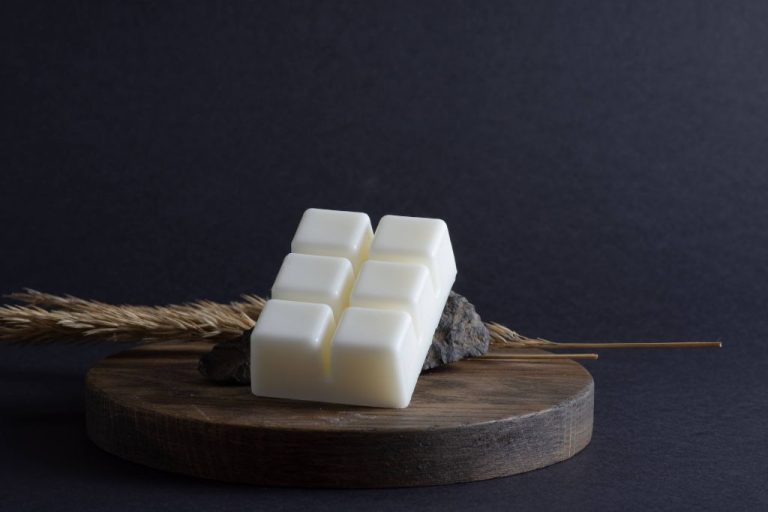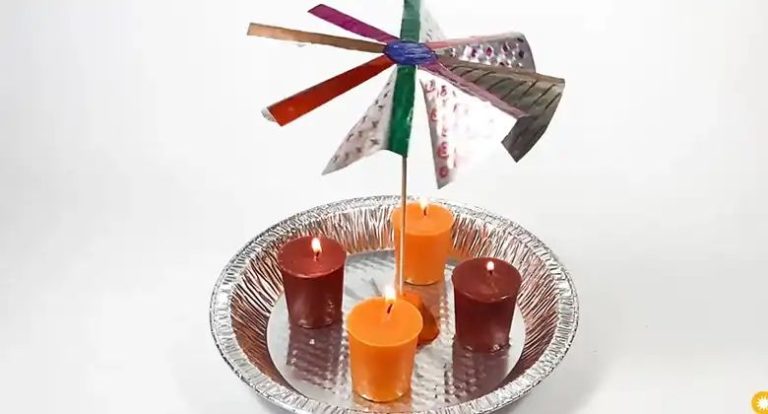Do Candle Wick Trimmers Work?
What Are Candle Wick Trimmers?
Candle wick trimmers are small handheld tools designed specifically for trimming the wicks on candles. As candles burn, the wick becomes longer and can produce excess smoke or an uneven flame. Trimming the wick helps sustain an even burn and optimize the candle’s burn time.
Wick trimmers are typically small scissors with curved blades that surround the wick, allowing for a quick snip. They are designed to neatly trim the wick without damaging the wax around it. The curve of the blades grabs and cuts the slender wick in one motion. Most models have short, sturdy finger loops for easy handling.
Using a wick trimmer helps candle wicks burn cleaner and avoid producing excess smoke. The act of trimming also removes any spent wick “ash” that has accumulated from previous burns. Well-trimmed wicks tend to curl over as the candle burns, which in turn maintains a consistent flame height. Trimming wicks is considered standard candle care and maintenance.
Benefits of Trimming Candle Wicks
Trimming the wick of a candle before lighting can provide several important benefits that improve the performance and safety of the candle.
One of the main reasons to trim a candle wick is to help the candle burn evenly and efficiently. Trimming the wick to an optimal length – usually around 1⁄4 inch – creates an even flame height that burns well all the way to the edge of the wax pool. This helps prevent tunneling, an effect where the center of the candle melts faster than the edges. An uneven flame height can also cause excess sooting or smoking.
Trimming the wick helps the candle last longer. Long, unkempt wicks get burned down into the hot wax rapidly. A shorter wick will melt the wax at a steadier rate, helping the candle burn for longer. This prevents wasted wax and makes the candle last more hours.
There are also some safety benefits to trimming candle wicks. Long wicks have tall flames that generate more soot and smoke. These byproducts can dirty surfaces around the candle with carbon deposits, as well as triggering smoke alarms. A shorter, trimmed wick will produce a smaller flame that burns more cleanly. Properly trimmed wicks are also less likely to bend over into the hot wax or container, reducing fire risks.
Overall, trimming candle wicks leads to better performance – like an even burn pool, less tunneling and smoke, and an improved burn time. It also provides safety benefits by controlling the flame size and minimizing soot. Following a good wick trimming technique is one of the best ways to optimize how a candle burns.
How to Use Candle Wick Trimmers
Here are step-by-step instructions for using candle wick trimmers properly on candle wicks:
- Make sure the candle has completely cooled and solidified before attempting to trim the wick. Trimming a hot, melting candle could lead to wax splatters and is a potential fire hazard.
- Use the candle snuffer or blow out any remaining flame on the wick until no smoke remains.
- Examine the wick to find the optimal trim length. For most standard candles, trim the wick to 1⁄4 inch or 1⁄2 cm.
- Open the trimming blades and position the wick in between them, closer to the tip. Apply gentle pressure to close the blades around the wick.
- In one smooth motion, squeeze the trimmers and pull down to snip the wick. Avoid twisting or sawing motions.
- Trim off any excess wick hairs sticking out from the blades. Multiple passes may be needed for thick wicks.
- Visually inspect the cut end to ensure it’s even and clean. Trim again if needed.
- Blow away any loose wick trimmings to keep the wax pool clear.
- Periodically clean the blade edges with rubbing alcohol to remove wax buildup.
Mistakes to avoid when using candle wick trimmers:
- Don’t trim candles that are still hot or liquid, as this can be dangerous.
- Avoid trimming the wick too short or it may impede the capillary action of the melted wax.
- Don’t close the blades too forcefully or you may cut through the wick completely.
- Be careful not to pinch the wick between the blades rather than cutting it.
- Don’t leave loose wick trimmings in the wax pool as they can clog the melted wax.
With the proper technique, candle wick trimmers can help candles burn cleaner and more evenly while maximizing their scent and ambiance.
Types of Candle Wick Trimmers
There are a few common styles of candle wick trimmers to choose from:
Scissors
Standard scissors can be used to trim candle wicks. The pros of using regular scissors are that most people already have a pair at home, so no special equipment needs to be purchased. Scissors give you good control and precision when snipping the wick. However, the cons are that scissors don’t have any protective guard to prevent hot wax from splattering. The blades of scissors can also get very hot if trimming a burning candle. Scissors need to be cleaned afterwards to remove wax buildup.
Snuffers
Candle snuffers are specifically designed for extinguishing and trimming wicks. Snuffers have a guarded metal cup that fits over the wick to put it out and catch any wax drips. Built-in scissors or blade on the bottom snips the wick to the ideal height. The pros of snuffers are that they protect fingers from heat and wax, cleanly put the flame out, and trim the wick in one tool. However, the cons are that they can be pricier than regular scissors and some find them tricky to position correctly.
Crimpers
Wick crimpers or pinchers have a jaw design that allows you to squeeze and flatten the wick between two metal plates. This crushes the wick instead of cutting it. The pros of crimpers are that they protect fingers from heat and pinch out the flame in one motion. They are also very inexpensive and portable. However, some find crimpers harder to use than scissors for precision trimming. The wick can be crushed unevenly if the tool doesn’t close properly.
Buying Guide for Candle Wick Trimmers
When shopping for a candle wick trimmer, there are a few key factors to consider:
Size: Look for a trimmer with blades wide enough to fit over the entire wick. Standard wick widths are 1/4″ to 1/2″, so the blades should be at least 1/2″ wide. Mini trimmers are available for votives and tea lights.
Grip: Choose a trimmer with an easy-to-grip handle that allows you to hold and control it with precision. Rubberized grips help prevent slipping.
Fit: The blades should have a tight fit so the wick is sliced cleanly. Loose-fitting blades will crush the wick instead of slicing it.
Design: Spring-loaded trimmers automatically align the blades while squeeze trimmers require manual alignment. Offset blades make accessing wicks in jars and containers easier.
Recommended Brands: Excel, Asani, and WoodWick are top brands for reliable, well-constructed candle wick trimmers. Cangshan and LiBa also offer quality trimmers at lower price points.
Where to Purchase: Candle wick trimmers can be found at craft stores like Michaels and Joann Fabrics or online retailers like Amazon and CandleScience. Bed Bath & Beyond and Walmart also carry a selection of trimmers.
Look for trimmers made of stainless steel for durability and longevity. Prioritize function over aesthetic extras. With proper care, a quality wick trimmer can last for years of candle making and burning.
Maintaining Candle Wick Trimmers
Keeping your candle wick trimmers in good working order is important for getting clean, trim cuts on your candle wicks. Here are some tips for properly maintaining your trimmers:
Cleaning
After each use, wipe down your trimmers to remove any wax residue using a soft cloth or paper towel. You can use a mild cleaner or rubbing alcohol if needed to cut through any wax buildup.
Storing
When not in use, store your trimmers in a clean, dry place like a drawer or cabinet. This will help prevent damage from moisture or dirt.
Sharpening Scissor Style Trimmers
If your scissor-style trimmers become dull, you can sharpen them using a small sharpening stone designed for scissors. Gently run the blade across the sharpening stone at the same angle as the original edge. Take care not to over-sharpen, as this can damage the blades.
Replacing Scissor Blades
If sharpening no longer restores the sharpness of scissor trimmers, you may need to replace the blade. Look for replacement scissors of the same size and shape to fit your handle. Use pliers to remove the screw or rivet holding the old scissors in place and replace with the new blade, securing with the fastener.
Keeping your trimmers clean, dry, and sharp will help them last for many candle-trimming sessions to come.
Trimming Wicks on Different Types of Candles
The wick length you trim your candles to can vary depending on the type of candle. Here are some tips for trimming wicks on common candle varieties:
Container Candles
Container candles like jar candles often have wider wax pools and wicks to match. These wicks need more trimming:
- Trim the wick to 1⁄4 inch before lighting for the first burn.
- Trim to 1/8 inch for subsequent burns as the melted wax pool deepens.
Taper Candles
Taper candles have longer, narrower wicks that require less trimming:
- Trim wick to 1⁄2 inch for taper candles.
- Taper candle wicks tend to curl as they burn, so you may need to straighten slightly between burns.
Votive Candles
Votive candle wicks are short and should be trimmed minimally:
- Trim votive wicks to 1/4 inch or less before lighting.
- Take care not to trim too much, as the wick needs to reach the bottom of the wax pool.
Get to know the typical wick length needs for the candle types you use. With practice, you’ll be able to quickly eyeball the right trimming length. Pay attention to curling or mushrooming wicks as you go, and adjust your trimming as needed.
Troubleshooting Wick Trimming Issues
Trimming your candle wicks with the proper tool is usually a simple process, but occasional issues can arise. Here are some common problems and how to fix them:
Uneven Trim
If your candle wick comes out with an uneven trim, the cause is likely a dull or damaged blade on your wick trimmer. Try replacing the blade or sanding it gently to sharpen the edge. Hold the trimmer steady as you cut in one smooth motion. Ragged edges can lead to an uneven burn.
Wick Too Short
Cutting the wick too short can cause issues like tunneling, poor wax pooling, or the candle not staying lit. Leave at least 1/4 inch of wick after trimming. If you trim too low by mistake, let the wick grow out for a few hours before lighting to prevent problems.
Wick Too Long
An overlong wick with a big mushroom head can create excessive smoke and dripping wax. Trim off the blackened portion of the wick until only fresh white wick remains. Cutting it about 1/4 inch is ideal for most candles. Long wicks also pose a potential fire hazard.
Trimmer Not Cutting
If your wick trimmer struggles to cut the wick, the blade is likely very dull. Try replacing it with a new single-edged razor blade. Make sure to handle the replacement blades carefully. You can also use a file or fine grit sandpaper to gently sharpen the dull blade, but replacement is better for optimal cutting.
Safety Tips for Candle Wick Trimming
Candle wick trimming seems simple, but there are important safety precautions to follow:
Always blow out the candle before trimming the wick. Never trim a burning candle, as this can be extremely dangerous. The flame could flare up or hot wax could splatter. Wait until the wick has completely cooled before attempting to trim it.
Avoid potential fire hazards. Make sure no flammable materials like curtains or paper are near the candle when trimming the wick. Trim the wick over a nonflammable surface. Keep the area well-ventilated to prevent smoke buildup.
Watch your fingers. Use caution when handling the trimmer to avoid cuts. Some wick trimmers are very sharp. Apply gentle pressure and avoid rushing the process. Consider wearing gloves for added protection.
Store trimmers safely. When not in use, keep the wick trimmer in a secure drawer or cabinet, especially around small children. The metal blade poses a safety risk if handled improperly.
Following basic precautions will allow you to safely trim candle wicks and enjoy your candles to the fullest.
Candle Wick Trimmers vs Scissors
When it comes to trimming candle wicks, you may wonder whether specialized trimmers are really necessary or if a pair of regular scissors will suffice. There are pros and cons to both options that are worth considering.
The main advantage of using dedicated candle wick trimmers is that they are specifically designed for the task at hand. The blades are shaped to snip wicks neatly and at the proper angle. Trimmers have a jaws-like design that grabs onto the wick for a clean, precise cut. Many have a built-in snuffer to extinguish the flame as well. Scissors, while able to cut wicks, lack these specialized features.
Scissors do offer more versatility, as they can be used for many household tasks beyond just trimming wicks. Candle trimmers, on the other hand, are a single-use tool. Scissors are also more affordable, while trimmers can cost $5-$15 for a quality pair. With scissors, you likely already have a pair on hand.
When using regular scissors, it’s harder to get a straight cut and properly trim down to the optimal 1/4 inch wick length. The blades may crush the wick instead of slicing it cleanly. Trimmers are designed to avoid this issue. Scissors also lack a flame snuffer, requiring you to blow out the candle first.
Ultimately, candle wick trimmers are specialized for a reason – they make the job much easier and neater. For avid candle users or those gifting candles, a quality pair of trimmers is worth the modest investment. They ensure perfect cuts each time. However, occasional candle users may find regular scissors sufficient, even if the results are not as precise.




